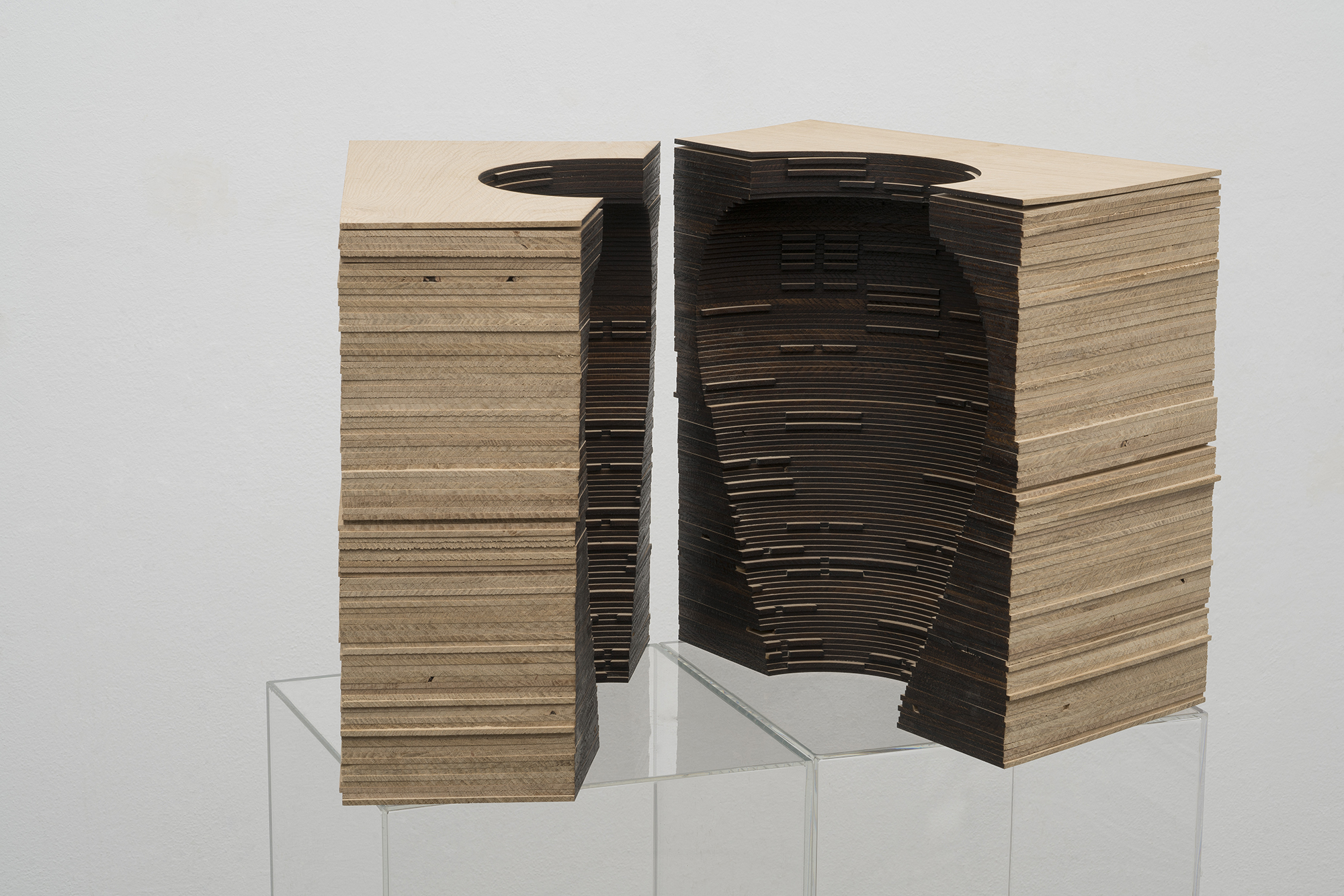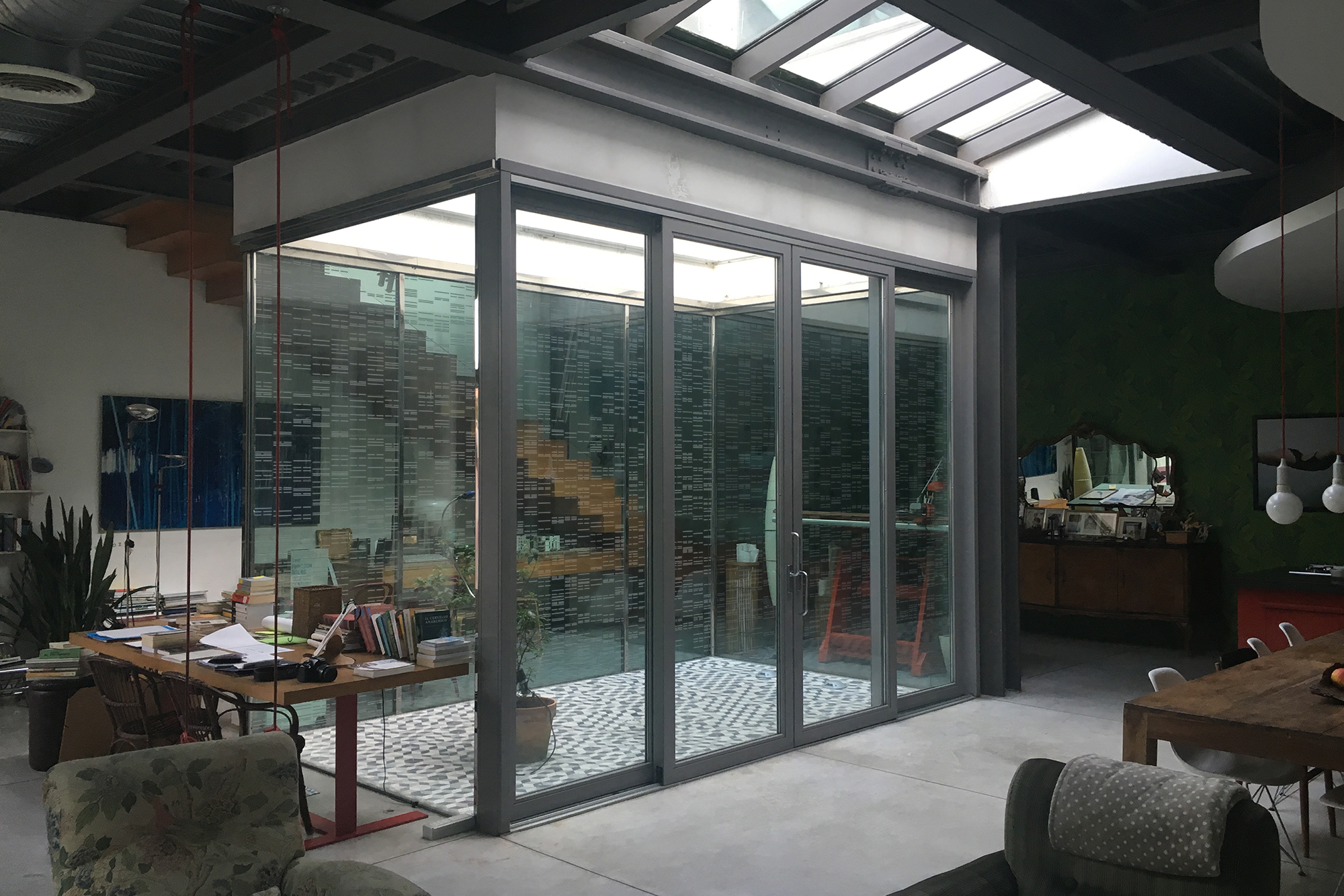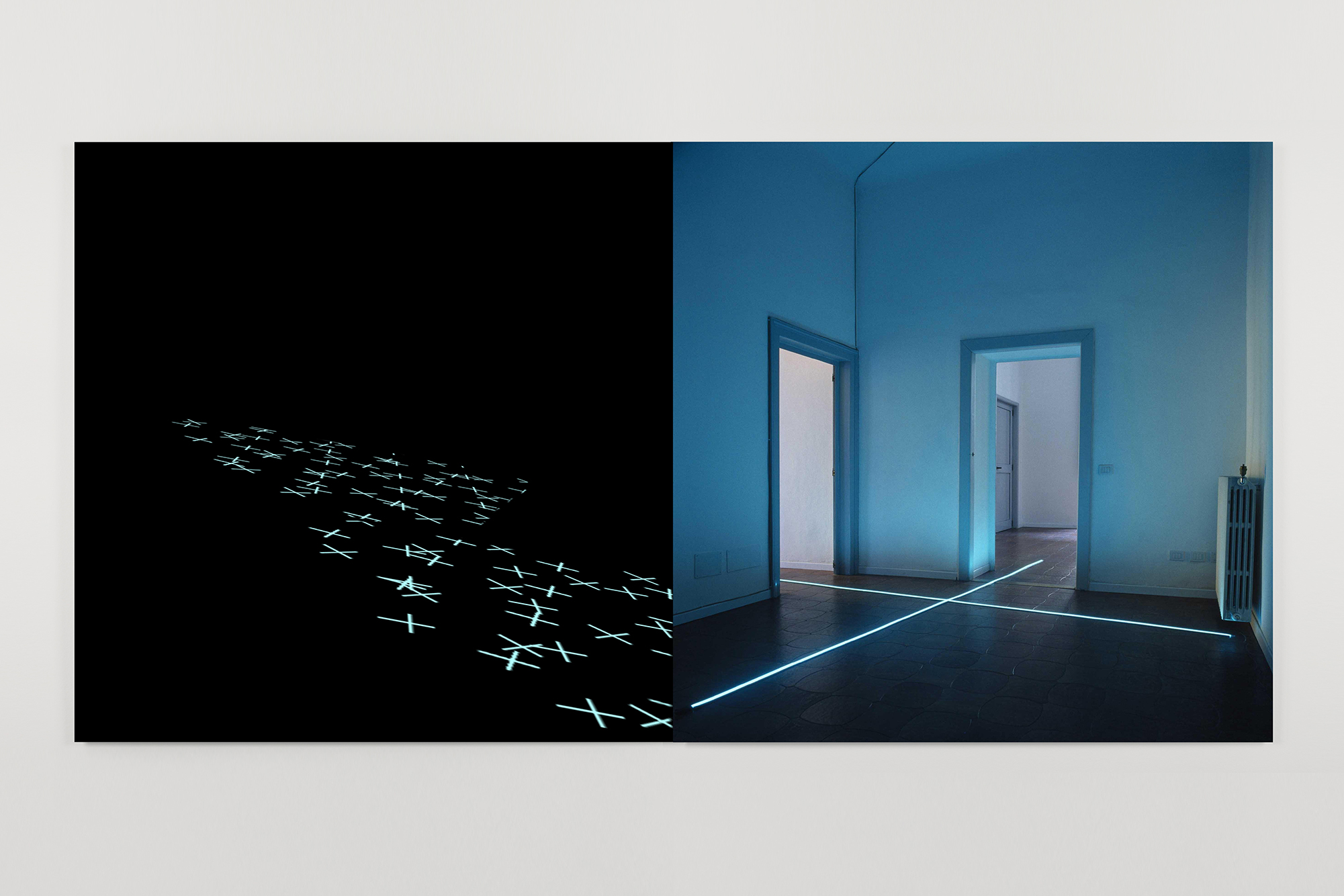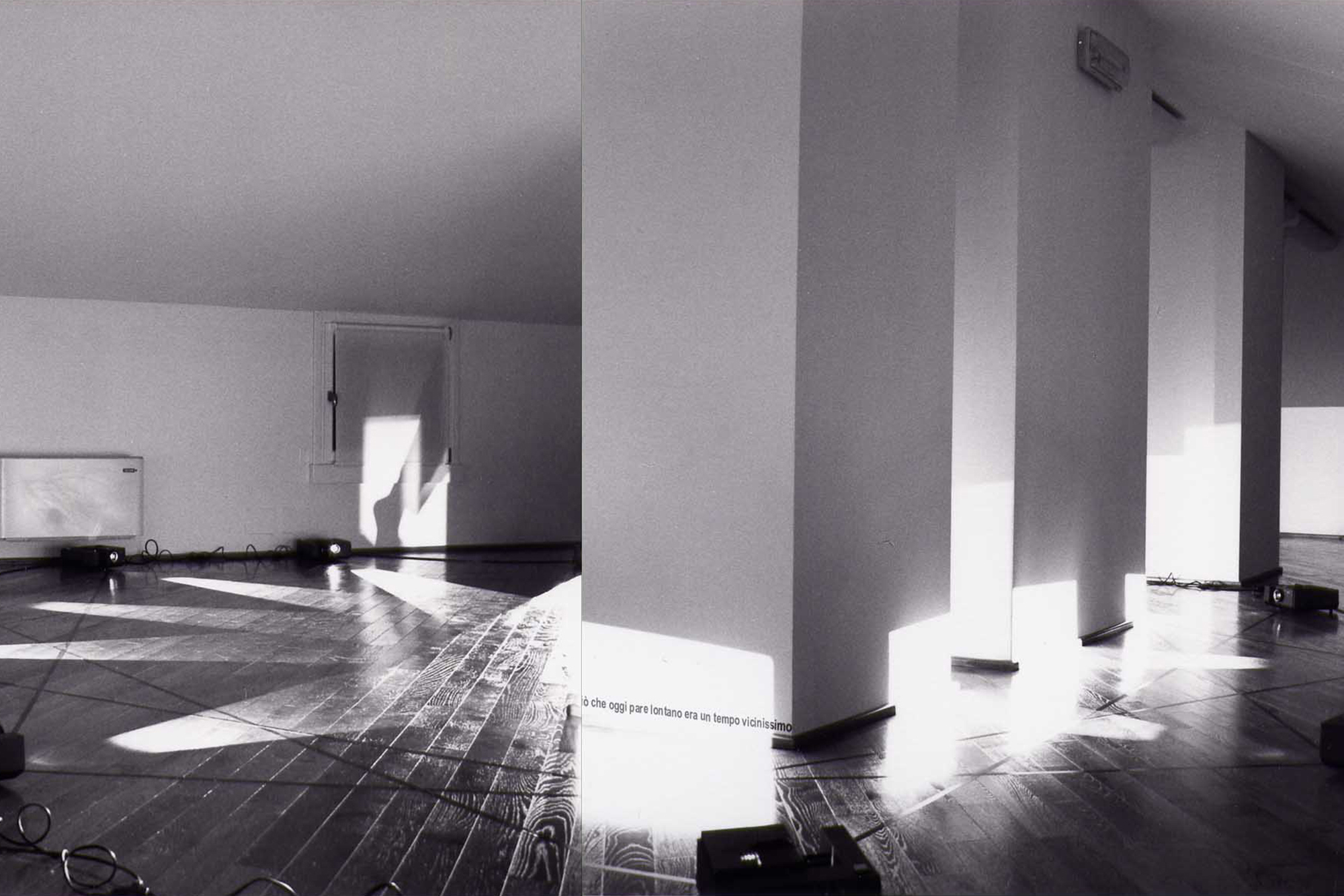renato jaime morganti / works
This mandala drawing was generated by the numerical sequence 4986489_548748978 that Grigori Grabovoi –contemporary Russian mathematician and mystic – gave on January 25th 2020, in occasion and against the Covid-19.The sequence was translated according to a consistent logical principle into geometrical vector lines so as to form two different strings, each one corresponding to one of the two numeric progressions.
The strings are formed by segments proportionally long as each number and arranged in space in order to move clockwise inside a hexagonal field; secondly, the strings have been then repeated periodically starting from their endpoints, so as to generate two closed and symmetrical cycles of bidimensional an tridimensional spiral describing the drawing of a mandala; then , this mandala's drawing has been subsequently projected within each of the twelve faces of a regular solid, a dodecahedron, so as to "crystallize" into a complex three-dimensional field: a cosmography; finally, by subtraction, the lines have been replaced by micro triangular figures that placed respectively in the extremes of each line segment summarize their vector properties: intensity (distances), inclination and direction.
The triptych version includes three representations in sequence in which the drawings of the three-dimensional structures - the projections of the mandala and the dodecahedron's lines - progressively disappear in favor of a purely perceptive and projective version formed by only triangles in space.
This drawing, between architectural and an archeological, is part of a series entitled oracolar(e), based on the use of The Book of Changes, an ancient classical Chinese text, as a generating principle.
Born for divinatory purposes and also known as I Ching, from the eighteenth century the Book becomes a source of inspiration and an object of study also in Occident in most disparate disciplines, including mathematics, philosophy, physics and psychoanalysis: an example is given by the use that GW von Leibniz made of it to create the binary code, the bases of modern technological language.
The project thus envisages the use of this text as a purely maieutic tool, emptying it of any divinatory purpose. The underlying idea was to generate a random drawing by consulting the text once a day and obtaining a response, ending it when the most unlikely combination was obtained: a six mutant lines hexagram. This process ended after about six years.
tracce, - traces - represents the geometric translation of this process and at the same time describes the psycho-physical space within which it moved: the numerical value of each response corresponds to a geometric measured line that depending to its nature, mutant or fixed, draws or erases.
Finally, a fragment of the drawing has been reproduced on a stone flooring.
This work is part of a series entitled oracolar(e), based on the use of The Book of Changes, an ancient classical Chinese text, as a generating principle.
Born for divinatory purposes and also known as I Ching, from the eighteenth century the Book becomes a source of inspiration and an object of study also in Occident in most disparate disciplines, including mathematics, philosophy, physics and psychoanalysis: an example is given by the use that GW von Leibniz made of it to create the binary code, the bases of modern technological language.
The project thus envisages the use of this text as a purely maieutic tool, emptying it of any divinatory purpose. The underlying idea was to generate a random drawing by consulting the text once a day and obtaining a response, ending it when the most unlikely combination was obtained: a six mutant lines hexagram. This process ended after about six years.
A variant of the obtained drawing has been laser-engraved on a lithographic stone.
mappa – map - translates and summarizes in this way the psycho-physical path that the whole process has followed.
These works are part of the oracolar (e) series, based on the use of the Book of Changes, an ancient classical Chinese text, as a generating principle.
Born for divinatory purposes and also known as I Ching, from the eighteenth century the Book becomes a source of inspiration and an object of study also in Occident in most disparate disciplines, including mathematics, philosophy, physics and psychoanalysis: an example is given by the use that GW von Leibniz made of it to create the binary code, the bases of modern technological language.
The project thus envisaged the use of this text as a purely maieutic tool, emptying it of any divinatory purpose. The underlying idea was to generate a random drawing by consulting the text once a day and obtaining a response, ending it when the most unlikely combination was obtained: a six mutant lines hexagram. This process ended after about six years.
Finally, a fragment of this drawing has been applied to these sculptural elements almost to create an energy field, a force capable of modifying the shapes of each of them.
vasi – vases - is a set of laser-cut oak sculptures, carved into each other without scraps and assembled with a very patient interlocking technique that required the manual insertion of two thousand tiny pegs.
This work is part of the oracolar (e) series, based on the use of the Book of Changes, an ancient classical Chinese text, as a generating principle.
Born for divinatory purposes and also known as I Ching, from the eighteenth century the Book becomes a source of inspiration and an object of study also in Occident for the interest in most disparate disciplines, including mathematics, philosophy, physics and psychoanalysis: not least the use that the mathematical philosopher GW von Leibniz made of it to create the binary code, the bases of modern technological language.
The project thus envisaged the use of this text as a purely maieutic tool, emptying it of any divinatory purpose. The underlying idea was to generate a random drawing by consulting the text once a day and obtaining a response, ending it when the most unlikely combination was obtained: a six mutant lines hexagram. This process ended after about six years.
The obtained drawing, here in the version established by only mutant lines, has been applied on a stained-glass window of a shaft, in order to generate different reflections and mirrorings, depending on the observation point.
This kaleidoscopic game is finally reinforced by a more subtle perceptive effect where the reflections of the individual patterns vaguely remind the movement of leaves under the wind: an oracular garden.
The mapping of some marble tiles on the facade of Milan's Duomo Cathedral turns here into a constellation, a set of windows through which it is possible to glimpse something beyond.
A plexiglass plate applied on a photo reports abstractly and almost imperceptibly a sequence of signs, symbols of digital viewfinders as flocks of birds before migrating.
The engravings are visible with a bright interactive mechanism that light up when the viewer is close to the artwork.
In this way, B4the_storm wants to tell us about that moment that characterizes the transformation of a gaze from passive to active, like that of a photographer or a hunter.
Like a cartography or an index of a hypertext, this drawing shows some symbols to represent keywords of an abstract text and the actions connected to them, in order to suggest parallel, transversal and non-linear ways of reading.
The text thus becomes a physical and virtual landscape to be explored in a visual mode, a portion of territory in which the gaze alternates with the static perception of a rediscovered unity, an overview, the dynamics of continuous suggestions between possible connections and potential paths.
Like a stele, a sheet of Plexiglas has a Braille text engraved on one side which is the translation of the definition of invisible taken from the Devoto dictionary.
Furthermore, the thickness of the plexiglass generates a series of reflections depending on the observation point.
The text, minimally perceptible, in the interactive version lights up when the viewer approaches it with the intention of touching it.
This interactive installation is made up of different spread luminous signs that are emphasizing the overlapping of the existing urban grid and are progressively activated according to the movement of the spectator, detecting his proximity.
In fact, each plus sign functions as an attractor - an invitation to approach - and at the same time as de-localizer, transforming itself in its opposite, the minus sign, just when the spectator is almost next and simultaneously activating a new plus sign in another part of the visible field.
The succession of switching on and off thus generates a random path.
A fragment of this drawing has been then applied inside an exhibition space with some electroluminescences positioned on the ground.
The spectator was invited to reach the intersection of the two light axes near which an infrared sensor was activated by instantly switching off one, thus transforming the plus symbol into that of a minus and activating a second light signal in an adjacent space.
+ o – qua - more or less here - is a "non-position indicator" that bounce us instead of mapping us like new technologies do, thus inviting us to experience a space in a random way.
Fibonacci’s numerical sequence was traced here on the protective sheath of an optical fiber illuminated by an RGB projector and underlined by gradually discovering small bright portions of it coinciding with the traces.
The "wire" - filo in Italian - thus obtained can be used to form the infinity symbol, as in this case, or to form random wireframe drawings or, again, to measure the surrounding space in a non-linear way.
Walking through the installations space, at the end of a long corridor, the viewer discovers a luminous object, a frame.
This frame is activated only if crossed, increasing its light intensity and changing color if necessary in sync with ever-changing sounds of "other" door openings, thus indicating the passage of a space-time threshold.
The door is also surrounded by mirrors that amplify the effect.
The installation thus aims to be an invitation to go beyond the normal perception.
The installation consists of three red letter signs that chase each other in the space of a deconsecrated church: "I", "here" and "Iamnothere".
The letter signs are in turn supported by two black painted panels, a bright red laser beam and a smoke machine.
The red beam connects the two signs "I" and " Iamnothere '- the dots of the two initial - sited respectively on the central wall of the apse and on a panel placed at beginning of the nave. The third and remaining letter sign "here" is sited in the apse on a second black panel reduced by a percentage in comparison to the first (39%) in order to create a perspective acceleration if viewed from the entrance or invert it if viewed from the apse.
The two panels support and mask the laser projector and the smoke machine.
This machine is timed so as to escape gradually the smoke spread along the apse and making the laser beam visible.
Finally, the lights of the apse are timed: every 60 'for a total duration of 60', the sudden turning off of the lights will let the red beam clearly visible from the apse.
The letter signs accompanied by all these fragmentary elements are clear visual references that thus want to create an effect of balanced instability which, like an echo in space, narrates the loss of centrality: the deposition of the "I".
The installation consists of twelve slide projectors arranged in a circle and projecting twelve light beams respectively drawing a star on the ground and twelve light frames on the surrounding walls.
The viewer is invited to enter into a lighting circle and to view the twelve different projections of his foots on the surrounding walls.
The idea is to translate a sound effect as the step’s echo that is so strongly characterizes the tomb of Agamemnon at Mycenae, into visual: the light and the simultaneity of these projections.
The installation is here enhanced by the presence of signs, black tape lines creating an abstract drawing of a tohlos (ancient tombs of the heroes) and a written sentence “what today appears away was very close a time ago".
Along this disused quarry spectators will gradually discover the least signs, lines carved in stone and painted in black, encouraging to move further and investigate this silent place.

















































